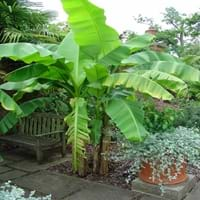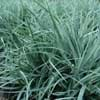Life Span
Annual
Perennial
Origin
South Africa
Japan
Types
Shasta Daisy
Gloriosa Daisies
Painted Daisy
Pyrethrum Daisies
Not available
Number of Varieties
Not Available
Habitat
gardens, Grassland
Open areas, Open Plains
USDA Hardiness Zone
10-11
6-11
Sunset Zone
8, 9, 12, 13, 14, 15, 16, 17, 18, 19, 20, 21, 22, 23, 24
H1, H2, 2a, 2b, 3a, 3b, 4, 5, 6, 7, 8, 9, 14, 15, 16, 17, 18, 19, 20, 21, 22, 23, 24
Habit
Clump-Forming
Upright/Erect
Flower Color
White, Yellow, Blue, Purple, Orange, Pink, Magenta
Yellow, Brown
Flower Color Modifier
Bicolor
Bicolor
Fruit Color
Not Available
Yellow green
Leaf Color in Spring
Green, Blue Green
Green
Leaf Color in Summer
Green, Blue Green
Green
Leaf Color in Fall
Green, Blue Green
Green
Leaf Color in Winter
Light Green
Light Green
Leaf Shape
Arrowhead
Cone shaped
Plant Season
Spring, Summer, Fall
Spring, Summer, Fall, Winter
Sunlight
Full Sun
Full Sun
The pH of Soil
Neutral
Acidic, Neutral
Soil Drainage
Well drained
Well drained
Bloom Time
Late Spring, Early Summer, Summer, Late Summer, Early Fall, Fall
Summer
Tolerances
Drought
Drought
Where to Plant?
Ground, Pot
Ground
How to Plant?
Seedlings, Stem Planting
From bulbs, From Rhizomes, Seedlings
Plant Maintenance
Medium
Medium
Watering Requirements
Allow soil to be completely dry in between waterings, It cannot sustain wet-feet, Keep the ground moist but not water-logged, Water in morning to avoid prompting diseases, Water twice a day in the initial period
Keep ground moist, Requires regular watering
In Summer
Lots of watering
Lots of watering
In Spring
Moderate
Moderate
In Winter
Average Water
Average Water
Soil pH
Neutral
Acidic, Neutral
Soil Drainage Capacity
Well drained
Well drained
Sun Exposure
Full Sun
Full Sun
Pruning
Cut or pinch the stems, Prune regularly, Remove deadheads
Remove damaged leaves, Remove dead branches, Remove dead leaves
Fertilizers
All-Purpose Liquid Fertilizer
All-Purpose Liquid Fertilizer
Pests and Diseases
Red blotch
Aphids, Rots, Scale, Spider mites
Plant Tolerance
Drought
Drought
Flower Petal Number
Single
Single
Foliage Texture
Medium
Bold
Foliage Sheen
Not Available
Glossy
Attracts
Bees, Butterflies
Not Available
Allergy
Not Available
Hives, Itchiness, Swelling, Throat itching, wheezing
Aesthetic Uses
Beautification, Bouquets, Showy Purposes
Not Used For Aesthetic Purpose
Beauty Benefits
Not Available
Not Available
Environmental Uses
Air purification
Air purification
Medicinal Uses
Cold, Cough, Stomach pain
Fiber, Hair Loss, Kidney Stones, Piles, Vitamin C
Part of Plant Used
Flowers
Fruits, Leaves
Other Uses
Showy Purposes, Used as Ornamental plant
Used as Ornamental plant, Used for its medicinal properties, Used in herbal medicines
Used As Indoor Plant
Yes
No
Used As Outdoor Plant
Yes
Yes
Garden Design
Bedding Plant, Container, Cutflower, Foundation, Groundcover, Hanging Basket, Mixed Border, Rock Garden, Wall
Cutflower, Feature Plant, Foundation, Mixed Border, Screening / Wind Break, Tropical
Botanical Name
OSTEOSPERMUM
MUSA basjoo
Common Name
African daisy or Blue-eyed Daisy
Japanese banana,Japanese fibre banana,hardy banana
In Hindi
अफ्रीकी डेज़ी
हार्डी केला
In German
African Daisy
hardy Banane
In French
marguerite africaine
banana hardy
In Spanish
margarita africana
plátano resistentes
In Greek
Αφρικανική μαργαρίτα
σκληραγωγημένο μπανάνα
In Portuguese
africano margarida
de banana resistentes
In Polish
Gerbery
hardy banana
In Latin
African primula
duros Musa sapientum fixa
Phylum
Anthophyta
Magnoliophyta
Class
Magnoliopsida
Liliopsida
Order
Asterales
Zingiberales
Family
Asteraceae
Strelitziaceae
Clade
Angiosperms, Asterids, Eudicots
Monocotyledonous
Tribe
Calenduleae
Not Available
Subfamily
Asteroideae
Not Available
Number of Species
Not Available
Not Available
Importance of African Daisy and Hardy Banana
Want to have the most appropriate plant for your garden? You might want to know the importance of African Daisy and Hardy Banana. Basically, these two plants vary in many aspects. Compare African Daisy and Hardy Banana as they differ in many characteristics such as their life, care, benefits, facts, etc. Every gardener must at least have the slightest clue about the plants he wants to plant in his garden. Compare their benefits, which differ in many ways like facts and uses. The medicinal use of African Daisy is Cold, Cough and Stomach pain whereas of Hardy Banana is Fiber, Hair Loss, Kidney Stones, Piles and Vitamin C. African Daisy has beauty benefits as follows: Not Available while Hardy Banana has beauty benefits as follows: Not Available.
Compare Facts of African Daisy vs Hardy Banana
How to choose the best garden plant for your garden depending upon its facts? Here garden plant comparison will help you to solve this query. Compare the facts of African Daisy vs Hardy Banana and know which one to choose. As garden plants have benefits and other uses, allergy is also a major drawback of plants for some people. Allergic reactions of African Daisy are Not Available whereas of Hardy Banana have Hives, Itchiness, Swelling, Throat itching and wheezing respectively. Having a fruit bearing plant in your garden can be a plus point of your garden. African Daisy has no showy fruits and Hardy Banana has showy fruits. Also African Daisy is flowering and Hardy Banana is flowering. You can compare African Daisy and Hardy Banana facts and facts of other plants too.





